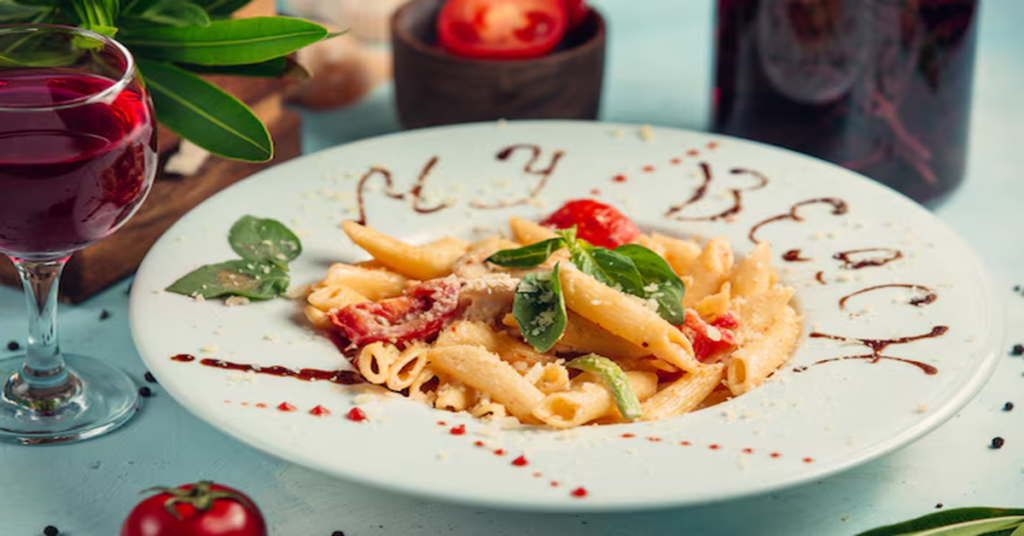Capellini, often referred to as “angel hair pasta,” is one of the most delicate and versatile types of Italian pasta. Its thin strands and fine texture have made it a favorite among pasta enthusiasts and chefs around the globe. Traditionally used in light and simple recipes, capellini pairs beautifully with a variety of sauces, vegetables, and proteins. But what sets capellini apart, and why is it such a popular choice for pasta lovers?
In this comprehensive guide, we’ll explore the history, preparation, serving techniques, popular recipes, and nutritional benefits of capellini. Additionally, we’ll share tips on choosing the best ingredients and how to create memorable meals with this elegant pasta. Let’s dive into the delicate world of capellini.
The History of Capellini
Capellini’s name derives from the Italian word “capello,” meaning “hair.” This pasta has its roots in northern Italy, where it has been a staple in households for centuries. Its fine, thread-like shape was traditionally made by hand, requiring great skill and patience to achieve its thin strands. Capellini’s lightness and simplicity reflect the values of Italian cuisine, emphasizing fresh ingredients and minimalistic preparation.
While capellini is now widely produced and enjoyed globally, it remains an iconic symbol of traditional Italian culinary craftsmanship.
Characteristics of Capellini
Capellini’s is distinct due to its:
- Thinness: With a diameter of 0.85 to 0.92 millimeters, capellini’s is one of the thinnest types of pasta.
- Shape: Its long, cylindrical strands resemble fine, delicate hair.
- Cooking Time: Capellini’s cooks very quickly, typically in 2-3 minutes.
- Versatility: It can be paired with light sauces, broths, or even served in salads and cold dishes.
Cooking Capellini: Tips and Techniques
Cooking capellini’s requires special attention to avoid overcooking or clumping. Follow these tips for perfect results:
1. Boil with Care
Use a large pot with plenty of salted water to ensure the strands don’t stick together. The general rule is one gallon of water for every pound of pasta.
2. Cook Al Dente
Capellini’s thinness means it cooks rapidly. Test the pasta after 2 minutes to ensure it’s al dente (firm to the bite). Overcooking can cause it to become mushy.
3. Use Gentle Sauces
Because of its delicate texture, capellini’s pairs best with light sauces such as olive oil, butter, or tomato-based sauces. Avoid heavy, cream-based sauces that can overpower the pasta.
4. Toss Immediately
After draining, toss the pasta immediately with sauce to prevent clumping and ensure even coating.
Popular Capellini Recipes
Here are some of the most popular ways to enjoy capellini’s:
1. Capellini Pomodoro
A simple and classic dish combining capellini’s with fresh tomatoes, garlic, basil, and olive oil. It’s a perfect summer recipe that highlights the natural flavors of fresh produce.
2. Capellini with Shrimp and Lemon
This light and refreshing recipe features sautéed shrimp, lemon zest, garlic, and a splash of white wine. Perfect for a quick and elegant dinner.
3. Capellini Aglio e Olio
This minimalist dish relies on just a few ingredients: garlic, olive oil, and red pepper flakes. Its simplicity allows the delicate texture of the pasta to shine.
4. Cold Capellini Salad
Combine cooked and chilled capellini’s with a mix of fresh vegetables, herbs, and a light vinaigrette. This dish is ideal for picnics and summer gatherings.
5. Capellini in Brodo
Capellini’s served in a light broth (brodo) is a comforting and warming meal, often enjoyed in colder months or as a first course.
6. Capellini with Pesto
Toss capellini’s with fresh basil pesto for a flavorful and aromatic dish that’s both simple and satisfying.
Nutritional Benefits of Capellini
While capellini’s is often enjoyed as a comfort food, it also offers several nutritional benefits, depending on the ingredients used. Here are some highlights:
- Carbohydrates for Energy: Like most pasta, capellini’s provides a good source of carbohydrates, which serve as a primary energy source.
- Low Fat: Plain capellini’s is naturally low in fat, making it a healthy base for meals.
- Fortified Nutrients: Many commercially produced capellini’s brands are enriched with iron and B vitamins, such as folate and niacin.
- Versatility for Healthy Additions: Pairing capellini’s with vegetables, lean proteins, and healthy fats creates a well-balanced meal.
For those with dietary restrictions, whole-grain, gluten-free, and protein-enriched versions of capellini’s are available, catering to various needs and preferences.
Choosing the Best Capellini
To ensure a great cooking and dining experience, it’s important to choose high-quality capellini’s:
- Look for Durum Wheat: The best capellini’s is made from durum wheat semolina, which gives the pasta its firm texture and nutty flavor.
- Check the Label: Authentic Italian brands often indicate that the pasta is made in Italy using traditional methods.
- Whole-Grain Options: For added fiber and nutrients, opt for whole-grain capellini’s.
- Specialty Stores: Consider purchasing from specialty Italian markets or artisanal producers for premium quality.
Serving Capellini Like a Pro
To elevate your capellini dishes, follow these serving tips:
- Preheat Your Plates: Warm plates help maintain the temperature of the pasta and prevent it from cooling too quickly.
- Garnish Thoughtfully: Fresh herbs, grated Parmesan, or a drizzle of olive oil add a final touch of flavor and presentation.
- Pair with Wine: Light white wines, such as Pinot Grigio or Sauvignon Blanc, complement the delicate flavors of capellini’s dishes.
- Serve Immediately: Capellini’s is best enjoyed fresh and hot. Avoid letting it sit too long after cooking.
Capellini in Global Cuisine
While capellini’s originates from Italy, its versatility has made it popular in cuisines worldwide. Here are some international adaptations:
- Asian-Inspired Capellini: Tossed with soy sauce, sesame oil, and stir-fried vegetables for a fusion twist.
- Mediterranean Style: Combined with olives, sun-dried tomatoes, feta cheese, and oregano for a vibrant dish.
- American Favorites: Often used in pasta salads or baked dishes with cheese and marinara.
Storing and Reheating Capellini
Proper storage and reheating ensure that leftover capellini’s remains delicious:
- Storage: Store cooked capellini’s in an airtight container in the refrigerator for up to three days.
- Reheating: To reheat, briefly immerse the pasta in boiling water or toss it in a hot skillet with a bit of sauce or oil.
- Freezing: While capellini’s is best enjoyed fresh, cooked and sauced pasta can be frozen for up to one month.
Conclusion
Capellini’s is a versatile and elegant pasta that embodies the essence of Italian cuisine. Its delicate texture, quick cooking time, and ability to pair with a variety of flavors make it a favorite for both casual and gourmet meals. Whether you’re enjoying a classic pomodoro or experimenting with global fusion dishes, capellini’s offers endless culinary possibilities. With the tips and recipes shared in this guide, you can confidently create delicious and memorable meals that highlight the beauty of this exceptional pasta.
FAQs
1. What is the difference between capellini and spaghetti?
Capellini is much thinner than spaghetti, with a diameter of 0.85 to 0.92 millimeters, making it one of the thinnest types of pasta.
2. What sauces pair best with capellini?
Light sauces like olive oil, garlic, fresh tomato sauce, or seafood-based sauces pair best with capellini. Avoid heavy cream-based sauces.
3. How long does it take to cook capellini?
Capellini cooks very quickly, usually in 2-3 minutes. Always check for al dente texture to avoid overcooking.
4. Can I use capellini for cold dishes?
Yes, capellini is excellent for cold dishes like pasta salads or chilled noodle bowls due to its thin and light texture.
5. Are there gluten-free capellini options?
Yes, many brands offer gluten-free capellini made from rice, corn, or other gluten-free grains.
6. What’s the best way to store leftover capellini?
Store cooked capellini in an airtight container in the refrigerator for up to three days. Reheat gently with sauce or oil to prevent drying out.







